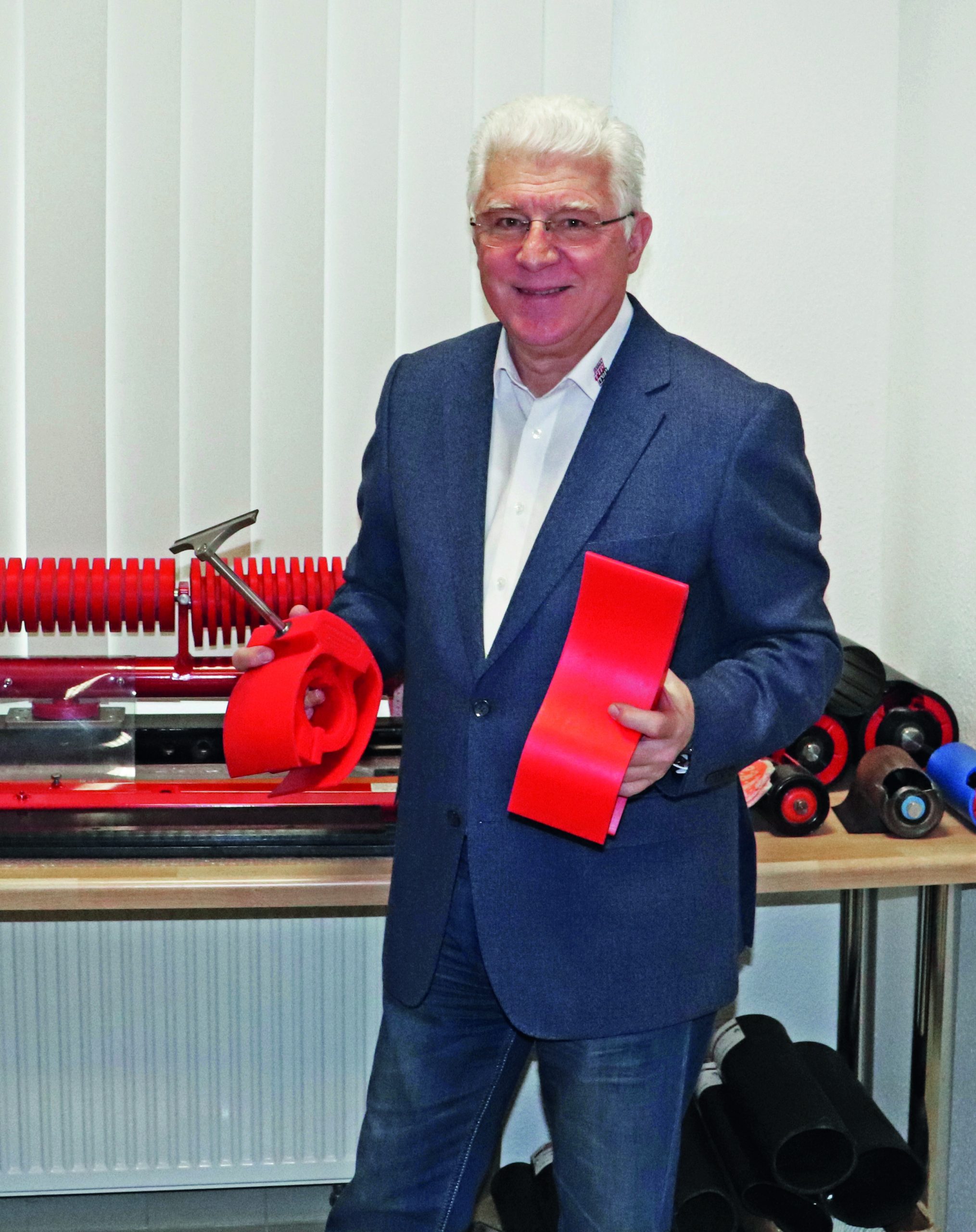By Adam Puchalla

How do contaminants on conveyor belts, so-called “carryback,” affect the production process?
Caking on conveyor belts is one of the main causes of inefficiencies in conveying operations, because it has two negative effects. First, caked material on the belt is usually carried to places where the material is not supposed to go – to the floor, to rollers, into gaps in the structure, or as dust in the air. Not only does this pose health risks to on-site workers, it also causes a lot of work to keep the plant manually clean on an ongoing basis. On the other hand – and this is the real critical aspect – soiling on the conveyor belt regularly results in malfunctions and unplanned downtimes of the plant. This is particularly the case when the frictional connection between the belt and the drive pulleys is disturbed by caking and the torque transmission is reduced. As a result of insufficient belt cleaning, uncontrolled downtime occurs, which in individual cases can result in considerable contractual penalties.
Effective cleaning of the belt is the method of choice against operational malfunctions. What type of conveyed material is this necessary for?
In practice, hardly any plant can do without automatic conveyor belt cleaning. This demonstrates that contamination on conveyor belts is a challenge for every operator. Optimized belt cleaning is actually recommended for every type of conveyor belt. This is because even dry conveyed material such as sand, clay and loam can cake on the belt if, for example, it is transported over long distances and becomes “sticky” on its way due to rain or air humidity. If caked-on material is not carefully removed from the belt “in time,” there is a risk that it will permanently adhere to the belt through drying or freezing. Such persistent soiling can no longer be tackled with simple scraper systems, e.g. the “do-it-yourself” type.
Friction leads to wear. How can effective cleaning of conveyor belts be achieved with as little friction as possible?
Scraper systems that are designed to clean reliably need to be in constant contact with the conveyor belt. This creates friction, no doubt about it. The challenge is to keep wear on the belt as low as possible. At REMA TIP TOP, we use scraper systems developed for this purpose to realize the best possible results for our customers. Two aspects are particularly important: the right material of the segments and carbide filler as well as the optimum contact pressure. If the belt is heavily contaminated, we recommend a two-stage cleaning process: For pre-cleaning, scrapers made of rubber or polyurethane are used. For fine cleaning, harder materials, usually suitable hard metals, are required. In addition, each scraper is pressed against the belt with a specific contact pressure in order to clean as gently as possible. For this purpose, we use special contact pressure devices that allow the contact pressure to be individually adjusted for each scraper to match the material load and belt speed.
What role does quick and easy maintenance play in selecting the right scraper system? What should operators consider?
At REMA TIP TOP, we aim to develop scraper systems that require as little maintenance as possible. By using special PU compounds for our scrapers, we achieve a very high abrasion resistance and thus long service lifetimes of up to 16 months. Wherever possible, necessary maintenance is integrated into ongoing operations, i.e. wearing parts of the scrapers are cleaned or replaced during regular downtimes. The standardization of components and fasteners allows maintenance to be done reliably even in very short time frames. Such standards are often lacking in simple systems, which may be cheap to buy but later cause bad surprises during maintenance. Proper documentation is also important for quick and easy maintenance. For example, the contact pressure for each individual scraper being serviced can be reliably rebuilt in just a few minutes. Among other things, we use digital plant documentation for this purpose, which our service teams can access worldwide and retrieve real-time information.
Adam Puchalla is product manager at REMA TIP TOP and has been developing solutions for the efficient cleaning of conveyor belts for more than 25 years.
